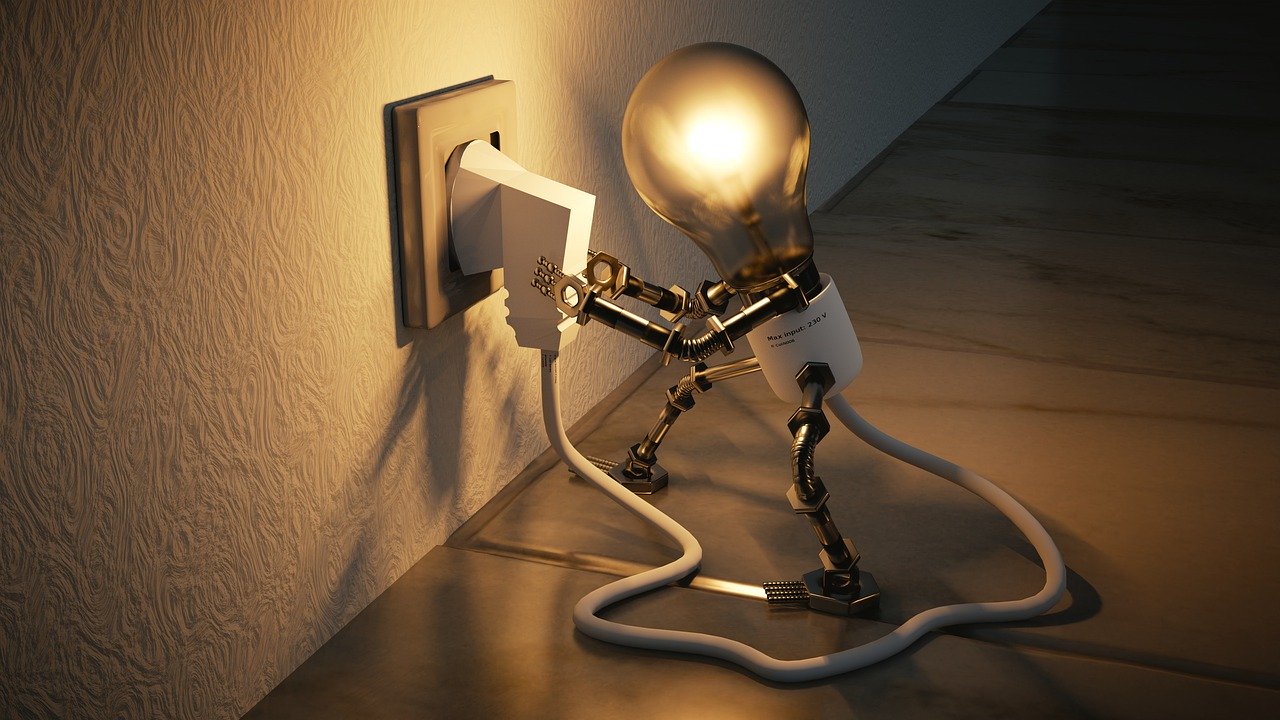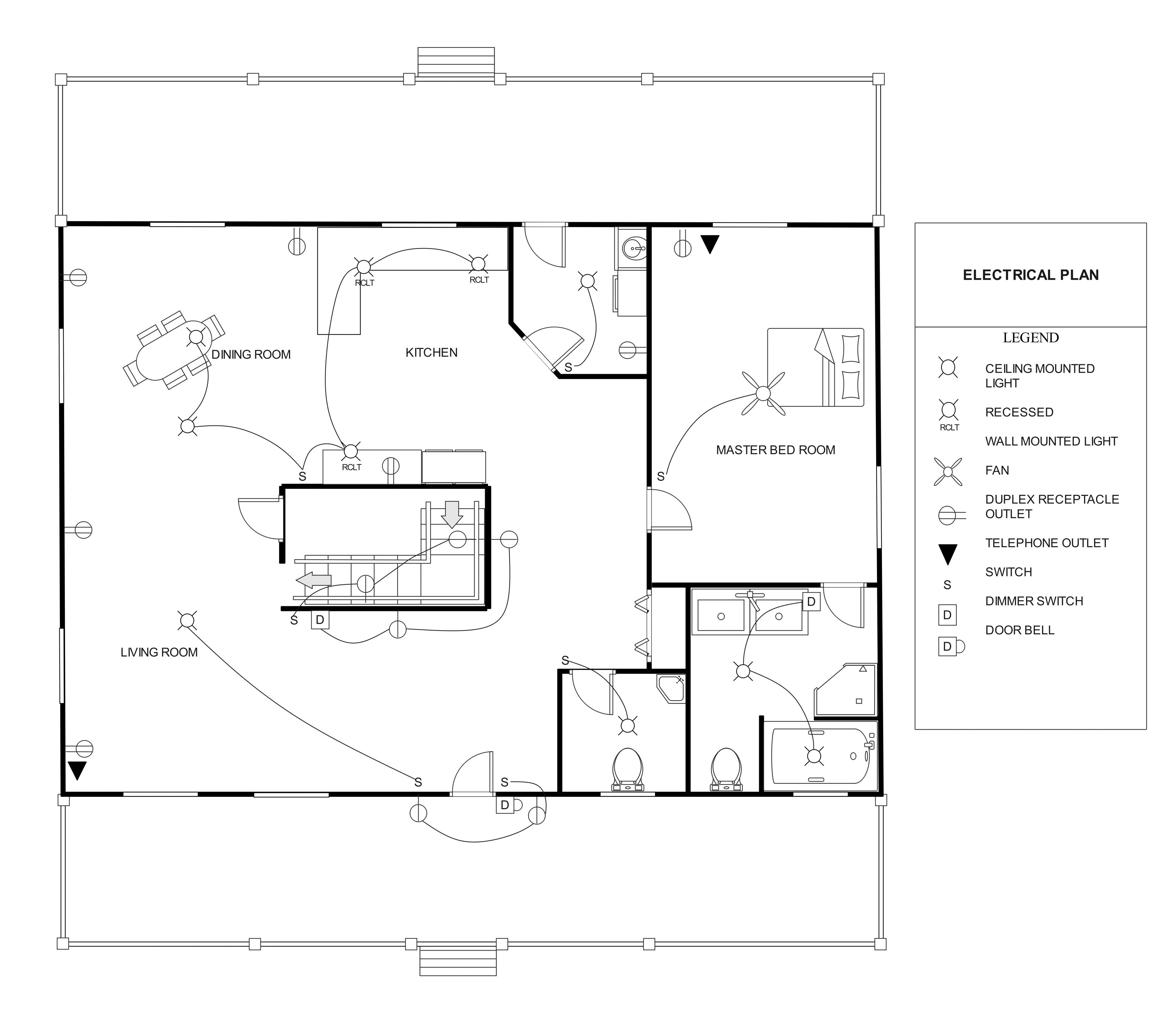Electrical Plan 101: Know Basics of Electrical Plan
A plan is drawn at a specific scale, and it is a diagram or listings of several steps. It shows all the details of resources and timings to accomplish an objective. So what is an electrical plan? Let's discuss this briefly with its purpose and a bunch of examples. If it is of interest to you, continue reading.

What is an Electrical Plan?
- Interconnection of electrical wires and other parts of the system
- Connection of different components and fixtures to the system
- Power lines with details such as size, voltage, rating, and capacity
- Power transformers and also their winding connections
- The main switches, tiebreaker, and fused switches
- Other essential equipment such as solar panels, batteries, generators, air conditioning, and so on.

Click to download and use this template.
While The eddx file need to be opened in EdrawMax.
If you don't have EdrawMax yet, you could download EdrawMax free from below.
You also can try EdrawMax Online for free from below.
Basic Electrical Plan
Purposes and Benefits of Electrical Plan
Purposes of Electrical Plan
Why is there a need to have an electrical plan or drawing? You must be thinking why to splurge on a precise electrical plan. The purposes of an electrical plan are as follows:
- These drawings are vital for documenting, communicating information, and troubleshooting your power systems on-site.
- Accurate and updated drawings keep your building in compliance with all the code regulations.
- A plan encompasses all aspects. It focuses on areas such as lighting, electronics, appliances, etc.
- It also considers the structure of the building. For example, if a building has railings, stairs, or any other components, modifications will be made accordingly.
- It is a thorough planning tool because it gives an in-depth view of your building's electrical and wiring system.
- It helps to distribute power to various appliances and equipment through accurate operation and installation of elements.
Benefits of Electrical Plan
- A plan highlights all the potential risks to make amendments quickly before the occurrence of any substantial damage.
- It helps to ensure that your system runs safely, efficiently, and smoothly.
- An electrical plan saves time by avoiding delays and problems. A draft pinpoints everything to prevent hazardous situations; thereby, it helps professionals to complete their work on time.
- It also saves money because nobody feels like spending more money than they already have. A draft includes all the details like wire's length, type of cables, and other parts you will need to complete your project. Thus, you do not have to spend a considerable amount of money on unnecessary things.
- An electrical plan prevents injury because it pinpoints all the building's anticipated areas that may harm a technician.
How to Draft an Electrical Plan?
An excellent electric plan significantly adds aesthetics and comfort in a building. Your drawing must include types of fixtures, locations, cables, switches, and hardwired appliances. However, an electrical plan may look scary and complicated, but they are not. These are pointers you should remember while drafting an electric plan.
Step 1: Know Your Layout
Either use a software or a graph paper and make a scale drawing of the different rooms. Make sure to include features such as cabinets, counters, stoves, beds, and other various symbols.

Step 2: Plan it in Advance
After finalizing your layout, focus on your electrical plan. The wirings go through the ceilings, walls, and floor before they are plastered, laid out, and fixed.
Step 3: Use Interior Layout as Your Starting Point
Around your exits and entries, place your fan, AC switches, and light. Now, place your electrical outlets near the counters and tables. Then, decide where to put your big appliances like TV, computer, washing machine, printer, etc.
When making an electrical plan, ask yourself some questions:
- Do I place switches at a convenient location?
- Is the electrical load on all the circuit alright?
- Do I place enough easy-to-reach receptacles?
Step 4: Walk Through Your Plan
Once you are finished with your layout, print it out, and walk through your home while holding it. Since there are no walls and electricity, the arrangement can be easily changed; therefore, imagine that you are turning on and plugging in appliances. This will enable you to put switches and outlets in the best places.




